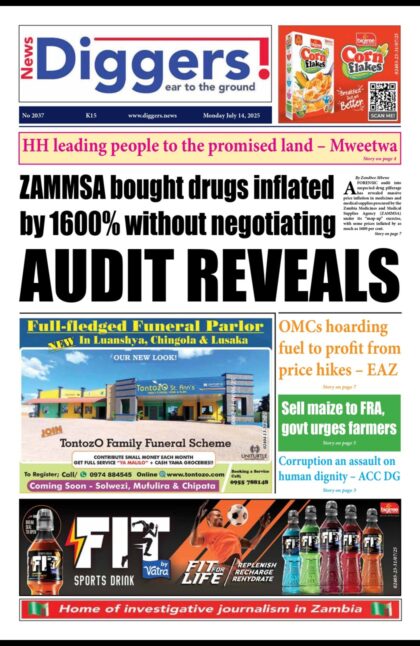ENERGY Minister Mathews Nkhuwa says load shedding is now expected to come to an end in March, 2021, following the completion of Kafue Gorge Lowerhydro Power Station.
During his address to Parliament, President Edgar Lungu assured the nation that load shedding would be a thing of the past by December, 2020, once the Kafue Gorge Lower power station was completed as it would produce 750 megawatts.
And in June, Nkhuwa also promised that load shedding would be mitigated by end of December, 2020, mainly as a result of increased water levels at the Kariba Dam.
He further said that the Kafue Gorge was also expected to start generating electricity by August, this year, which was expected to significantly reduce load shedding hours across the country by the end of this year.
But speaking during a media briefing in Lusaka, Tuesday, Nkhuwa announced that Zambia still faced a power deficit of 810 megawatts with an average generation of only 1,846 megawatts, and that load shedding would only completely be phased out by next March.
“I wish to take this opportunity to inform and address the nation on the electricity situation in Zambia. Currently, we are averaging generation of about 1,846 megawatts, which is 1,413 megawatts from Zesco and 420 megawatts from Independent Power Producers or IPPS. At Kariba North Bank power station, the dam level fell from previous level 480.33 meters to 480.20 metres, representing 33.2 per cent of the usable storage,” Nkhuwa said.
“The power deficit has remained at 810 megawatts and, therefore, load shedding for up to 10 hours is scheduled for different customer categories under the distribution. However, energy load shedded is being applied during the peak period to maintain a balance between the available generation to the demand hand system process.”
Nkhuwa said about 150 megawatts was expected to come on-stream next month from Kafue Gorge Power station, while another 150 megawatts was expected by Christmas, adding that the remaining 450 megawatts was expected to be injected by next March to narrow the huge power deficit.
He said that government had established a number of activities to mitigate the power deficit in the country.
“To mitigate the power deficit, there are a number of activities that are currently being implemented by Zesco taking into consideration the Electricity Act of 2019, and the National Energy Policy of 2019, that will entail a mix with some projects under implementation. Notable among projects being implemented include: construction of 750 megawatts Kafue Gorge Lower Power Station, this station started being constructed way back in 2016. As you can see, it is now four years and we are going into the fifth year before we can see the fruits of the power station. It doesn’t take one day to build a power station, it takes long, like five years,” Nkhuwa said.
“So, government has been working and very soon you will see the completion of these power generations. We expect the first of 150 megawatts come into play by end of October, this year, and the next 150 megawatts making it 300 by end of December and the remaining 450 megawatts will be completed by March, 2021. Going beyond March, we don’t expect any load shedding beyond March, 2021. The construction of 15 megawatts Luwashi sub-station currently under defect liability period is expected to be brought back into service on Friday, this week, which is September 25th 2020. The construction of the 2,400 megawatts Batoka Power Station in collaboration with Zimbabwe Electricity Transmission and Distribution Company of Zimbabwe. Under this project, Zesco will manage about 1,200 megawatts, while Zimbabwe will manage about 1,200 megawatts as well. So, it is a 50/50 situation.”
And Nkhuwa announced that Zesco had partnered with PowerChina for the development of 600 megawatts of viable renewable energy plants in various parts of the country.
“Zesco has partnered with PowerChina for the development of 600 megawatts of viable renewable energy plants in various parts of the country, namely: Kariba 200 megawatts; Kafue Gorge Lower, 200 megawatts; Chishimba, 200 megawatts. Furthermore, Zesco has participated in studies to establish renewable energy, both solar and wind that can be integrated into the interconnected power systems taking into consideration the highly variable theoretical contributions. These studies are currently going on. Lastly, as you may be aware, electricity is key in facilitating activities of all sectors of the economy, the government will further continue to promote and implement measures aimed at improving electricity generation,” said Nkhuwa.




















One Response
That is good Mr Minister. However, What is the energy Minister going to do to make sure that there is enough and plenty of rainfall as this has been the reason given for loadsheding that the country is experiencing.